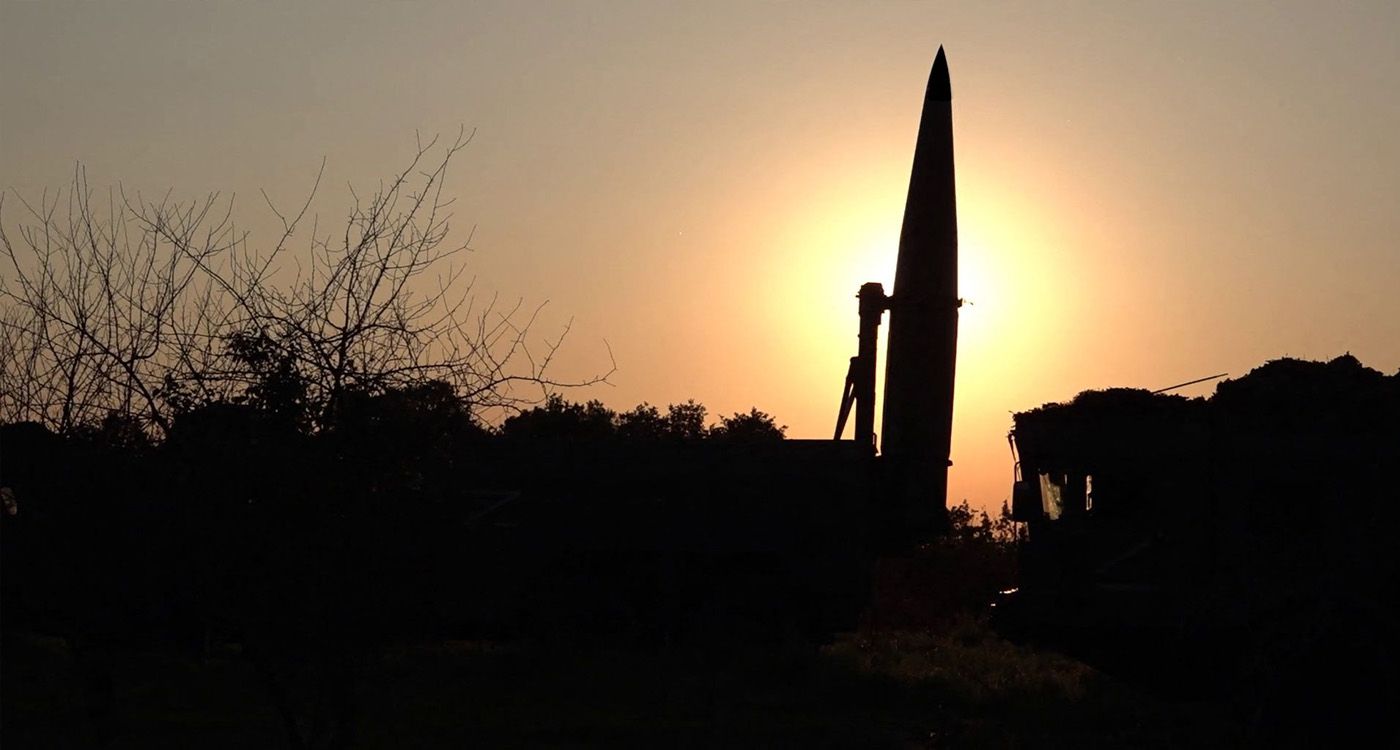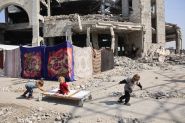- Home
- Middle East
- Tactical Nukes Worry Strategists

©Handout / Russian Ministry of Defense / AFP
The Kremlin, via spokesperson Dmitry Peskov, reiterated on Friday its firm opposition to the use of tactical nuclear weapons, describing any potential US strike on Iran as “catastrophic.”
Peskov was responding to “media rumors” about a possible nuclear strike aimed at destroying Iran’s uranium enrichment facility at Fordow, stressing that Moscow would oppose any such escalation.
This statement comes amid mounting global nuclear tensions, particularly around Iran’s nuclear program. According to a report from the Stockholm International Peace Research Institute (SIPRI), a think tank specializing in conflict research, nuclear arsenals are being modernized, arms control treaties are deteriorating and rhetoric around tactical nuclear weapons is becoming increasingly normalized.
A Vague Definition but a Clear Battlefield Role
According to the US think tank Nuclear Threat Initiative (NTI), a tactical nuclear weapon (TNW) is generally defined by its limited range: less than 500 km for land-based missiles and under 600 km for air- or sea-launched delivery systems. These weapons typically have low yields, ranging from a few tens of tons to several kilotons, and are intended to support conventional forces in localized conflicts.
However, definitions vary by country. France classifies all its nuclear weapons as strategic, while China labels certain systems as “strategic,” which the US and Russia would consider tactical. Their purpose is to cross psychological red lines. Smaller and less destructive than strategic weapons, they are seen as intermediate deterrents with a higher likelihood of use.
Discreet Arsenals with Minimal Oversight
Despite their proliferation, tactical nuclear weapons remain the least regulated category internationally. They are only subject to a series of unilateral declarations made in 1991 by former US President George H.W. Bush and Soviet leader Mikhail Gorbachev following the USSR’s collapse. These aimed to prevent loss of control over thousands of warheads scattered across Soviet territory.
While these declarations led to large-scale withdrawals and partial dismantling, no formal treaty or verification mechanisms were established, resulting in persistent uncertainty. Estimates vary and transparency is limited. The US completed elimination of some TNW types, while Russia extended the process until 2004, citing budgetary constraints. Today, neither country systematically discloses comprehensive data on their stockpiles.
A 2002 NTI report estimated that TNWs constitute about 30 to 40% of the US and Russian arsenals and nearly 100% of the nuclear weapons held by China, France, Israel, India and Pakistan.
Cold War Deployment and Lasting Strategic Impact
Although TNWs have not been used since Hiroshima and Nagasaki, they were widely deployed during the Cold War. The US stationed TNWs in Europe—in Germany, Italy and Turkey—to deter Soviet aggression, while the USSR deployed them in Warsaw Pact countries such as East Germany, Poland and Czechoslovakia.
They were also considered for use in Korea and Vietnam, but never deployed. Notably, US General Douglas MacArthur advocated their use in Korea, a proposal that cost him his command. The existence of TNWs has influenced military strategy and deterrence doctrines for decades.
An Increased Risk of Proliferation and Use
TNWs may pose a greater threat than strategic weapons. Their small size and portability make them more vulnerable to theft, diversion or unauthorized use.
They are often pre-positioned near front lines, enabling intermediate-level commanders to exercise delegated authority during conflict. As the NTI notes, their use is seen as psychologically and militarily more “acceptable:” some decision-makers consider a 1-kiloton bomb as a strategic trigger that would not cause large-scale destruction.
The Atlantic Council further challenges two common misconceptions weakening US deterrence posture: that preparing for nuclear war is inherently provocative and that battlefield nuclear use is unthinkable. These assumptions may not be shared by Washington’s adversaries.
The TNW’s silent proliferation remains a significant blind spot in international security. Though less dramatic than intercontinental ballistic missiles (ICBMs), TNWs are no less destabilizing.
In a world where nuclear deterrence increasingly shapes the tactical calculations of major powers, ignoring these weapons is akin to burying one’s head in the sand, risking that a “small” bomb could irreversibly change the course of a war… just minutes before midnight.
Read more





Comments